How the pike tail reproduces: methods and rules
Interestingly, many houseplants are given simple names by the owners, which are then distributed among flower growers. It is connected with the external structure of the flower, or with those signs that are associated with it. But sometimes it's hard to pronounce sansevieria, when it is so simple and understandable - a pike tail.
In the Asian, African deserts, it is easy to find a representative of the Asparagus family, sansevieria. As soon as the plant got into European homes, it was immediately appreciated. Now pots with a houseplant are found in offices, classrooms, private homes. For many, the pike tail is the personification of a persistent character that easily endures all adversity.
Content:
- Indoor plant description
- Features of leaf propagation
- Breeding procedure by dividing the rhizome
- Care requirements after planting sansevieria
- Diseases and pests of plants, the fight against them
- The use of pike tail in medicine
Indoor plant description
A distinctive feature of sansevieria is its beautiful leaves, hard, wide or narrow with a pointed end. In different types of flower, the color of the leaves ranges from light green tones to dark, brown, silver. On the surface of some, spots and stripes contrasting in color are visible. There are varieties in which the leaves are covered with a waxy bloom. The plant has no stem, the leaves emerge immediately from the soil, where a creeping rhizome with filamentous processes is hiding.
The pike tail rarely blooms, but if it happens, then a peduncle forms in the rosette of leaves.
Flowers appear from it, narrow in shape, decorated with long stamens. The green and white buds can give off a subtle scent similar to that of lilac or vanilla.
The following types of sansevieria are popular among flower growers:
- Chania's leaves are wide, pointed upwards. They have light-colored transverse stripes on a dark green surface.
- Lush rosettes of the Duneri variety attract with their originality of color. Blurry dark green stripes on a light leaf plate look unusual. Many rosettes give many white buds.
- Long xiphoid leaves, bordered at the edges with a yellow stripe, characterize the type of Sansevieria Laurenti.
All species, and there are about seventy of them, are varied in the color of the leaves.
Features of leaf propagation
There are several breeding methods for pike tail. For each species, you can choose the appropriate one, which will give a high-quality healthy plant. Tall sansevieria with uniformly colored leaves is propagated by leaves. For variegated species, this method is not suitable, because they will not retain the decorative effect of the color.
Breeding features:
- Having chosen an old powerful leaf, it is cut off.
- Then with a knife they divide the plate into parts, 4-5 centimeters each. The instrument must be disinfected before starting to separate the sheet.
- The resulting leaf stalk is kept in the air for a day so that it withers.
- Then the lower part is placed in a container with wet sand. Two-thirds of the cutting is left on the surface.
- The leaf will quickly take root if you cover it with a jar, placing it in a warm place.
- Water the cutting leaf by adding water to the pan.
Rooting will occur in about six to eight weeks. After that, the pike tail is transplanted into another pot. If by this method you want to get a plant with leaves that are light at the edges, then a wedge is cut out from the middle of the leaf in the form of an arch.
The light edges are in contact with the soil when planting, and the green center is above the ground. After three months, sockets with light stripes can be obtained. The leaf propagation method is always effective and produces a strong plant.
Breeding procedure by dividing the rhizome
For variegated species of sansevieria, reproduction by dividing the rhizome is suitable. The procedure falls in early spring, it is carried out in stages by the following steps:
- An adult flower is carefully removed from the pot.
- Putting it on the film with the rhizome, make an incision with a sharp knife. It is important here that there is a growth point in each part. You can divide the root into four parts.
- Where the cut passed, it is necessary to disinfect the place with crushed coal.
- Now each part of the plant is placed in a separate container, which contains wet sand.
- Pots with transplanted material are placed in a warm room.
- Once the plant is rooted, it will sprout new growth.
- Finally, you can transplant the pike tail into a permanent container.
If sansevieria has side shoots, then they root well, having separated from the mother bush. For the development of a strong root system the flower needs warmth, moderate watering.
Post-planting care requirements
After planting a young plant, optimal conditions for development and growth are created for him. And although sansevieria is unpretentious, it needs lighting, a comfortable air temperature, and sufficient humidity:
- In the wild, the plant lives in the bright sun, being able to withstand drought. Prefers a pike tail in places where the light will be diffused. Excessively bright sunlight will lead to fading of the leaves, their variegated color will fade. Many people place a flower in semi-dark rooms at home.
- The pike tail is unpretentious to temperatures. He feels good both at 18 degrees and at 25 above zero. In winter, fifteen degrees of heat is enough.
- Sansevieria does not like high humidity in rooms, dry air is better for her. Therefore, it is not necessary to spray the ornamental culture. It is enough to wipe the leaves with a damp cloth from dust.
- Depending on the humidity in the house, watering the plants is carried out in moderation. You should not thoughtlessly moisten the soil in the pot, otherwise the flower will rot and die.
- For soil in a container, the following requirements are: it must be mixed. In it, half should be foliage of the earth, the rest is sand and a little soddy soil. Before transplanting a flower, it is necessary to disinfect the soil by spilling it with boiling water.
- Of the fertilizers for sansevieria, complexes with a low nitrogen content are needed.
- The volume of the pot is important for the pike tail. It should be larger than the previous one by five centimeters after transplanting the plant.
If you follow the basic rules of care, the pike tail will look strong and healthy.
Diseases and pests of plants, the fight against them
One of the most common causes of plant death can be fungal diseases. Excessive waterlogging causes them. Strict adherence to the rules of care, when the plant is watered as the soil in the pot dries, will avoid infection with pathogenic fungi. If rotting of the root and base of the leaves is observed, then it is necessary to transplant the pike tail into another pot, cutting off the affected parts. Will help get rid of spores and spraying with phytoncides.
The observed changes in the development of sansevieria are associated with improper care, the appearance of diseases, and the attack of pests.
Of the pests, spider mites attack sansevieria. They, feeding on plant juices, lead to blanching of the leaves, drying them out. Destroy the parasite by processing insecticides.
Colonies of thrips appear on the back of the leaf. In this case, the green plate turns into a gray-brown one. Treatment with drugs such as Aktara will save the pike tail.
A mealybug settles at the base of the flower, sucking out all the juices. As a result of the action of the pest, the leaves curl, turn yellow, die off. The worms can be harvested by hand, spray the damaged flower with Karbofos.
The use of pike tail in medicine
Like many indoor plants, the pike tail is beneficial by clearing the air of the room from harmful substances and bacteria. The medicinal properties of sansevieria are also known:
- Crushed leaves of the plant fill a third of the glass and add the rest with vodka. Insist the medicine in a dark place for three weeks. The strained tincture is taken in a tablespoon three times a day by those who suffer from cystitis.
- Well removes the sap of the plant pain, inflammation in the ear. They bury it once or twice daily.
- Pike tail leaves applied to ulcers, wounds, inflamed areas soothe, reduce tissue swelling.
- A decoction of the leaves of the plant expels parasites from the body. By lubricating the areas of the body affected by the scabies mite, they relieve the symptoms of an unpleasant disease.
To protect the house from radiation, pathogenic viruses, to improve the health of family members, it is necessary to plant sansevieria.
More information can be found in the video:




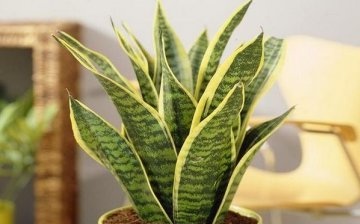
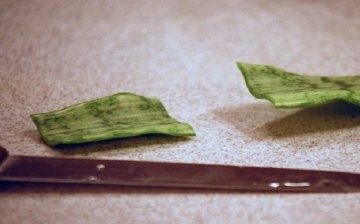
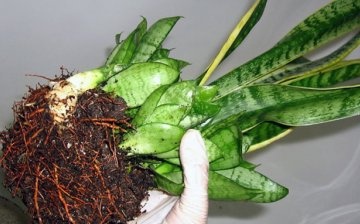
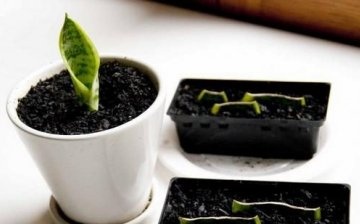
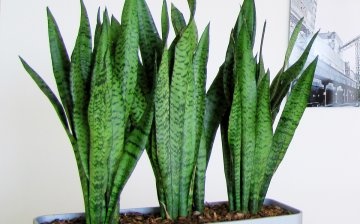
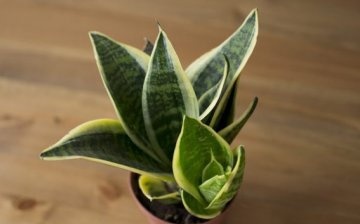








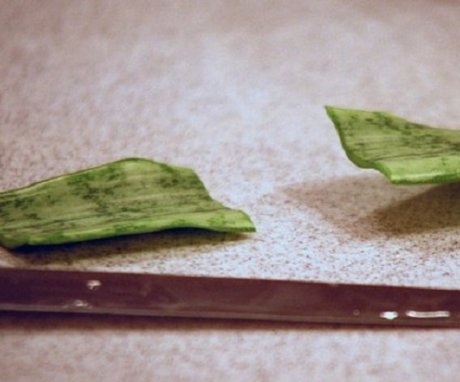
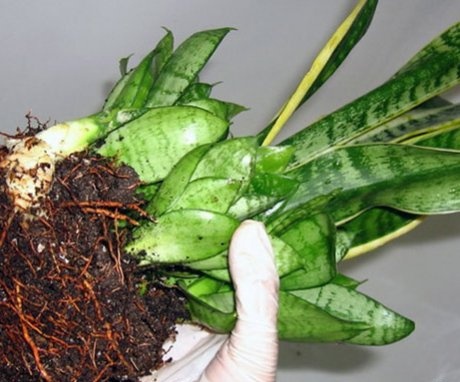
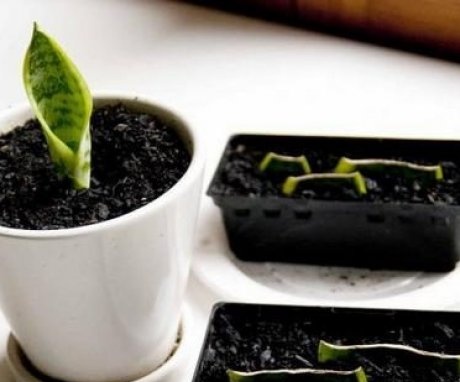


I like this plant - not whimsical, perfect for landscaping both apartments and office premises. For some reason, it doesn't grow in height for me, but actively gives children. I didn't know that it could be easily propagated with a piece of leaf.